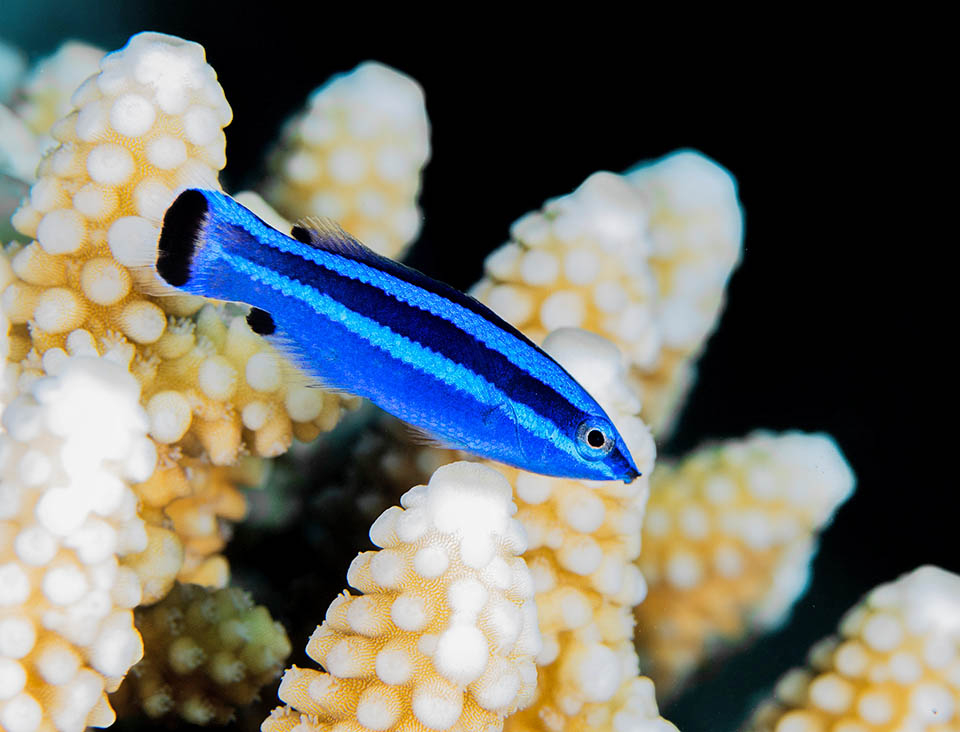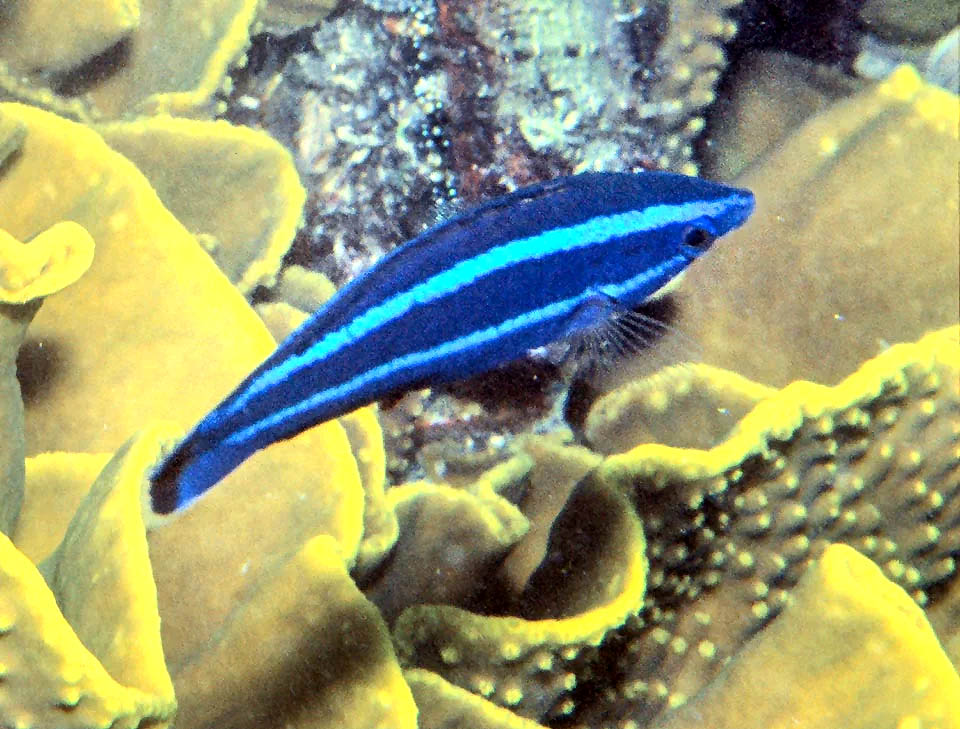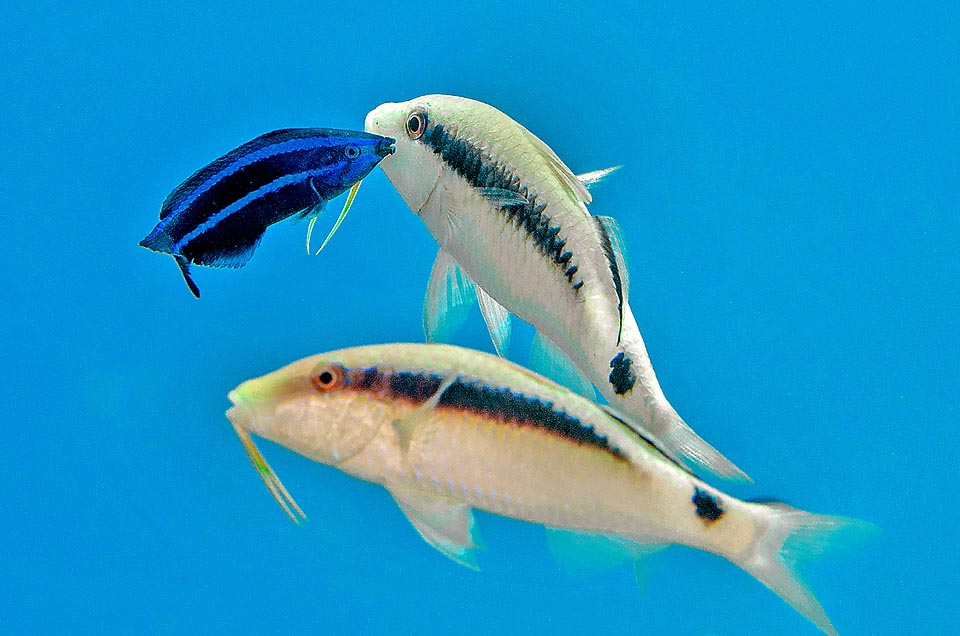Family : Labridae

Text © Giuseppe Mazza

English translation by Mario Beltramini

Little studied, Larabicus quadrilineatus is an elegant blue-and-white striped wrasse endemic to the dense coral formations of the Red Sea and Gulf of Aden © Rafi Amar
The Larabicus quadrilineatus (Rüppell, 1835) is a little studied species belonging to the class of the Actinopterygii, the ray-finned fishes, to the order of the Perciformes, and to the vast family of the Labridae.
The name of the genus Larabicus reminds us in Latin that it lives in Arabia, whilst the specific term quadrilineatus refers, always in Latin, to the four longitudinal lines on the sides.
Zoogeography
It is endemic to the Red Sea and the Gulf of Aden.

The adults, about 11 cm long, live in shallow waters, not deeper than 15 m, feeding on madrepore polyps © Giuseppe Mazza
Ecology-Habitat
It lives among dense madreporic formations, in shallow waters, never going down below the 15 m of depth.
Morphophysiology
It slightly exceeds the length of 11 cm. The livery is splendid due to the elegant combination of the light blue with the dark blue, but for its fortune, seen its diet based on cnidarians, it is not very appreciated by the aquarists who then might see destroyed in a few days their live madrepores, home pride and bought at a very high price.
Ethology-Reproducive Biology

The young behave as “cleaning wrasses” freeing turtles and big fishes from the ectoparasites © Giuseppe Mazza
In fact, the adults of the Larabicus quadrilineatus nourish of coral polyps, whilst the juveniles in the beginning behave as “cleaning wrasses” freeing turtles and big fishes from the ectoparasites.
Fertilization occurs in pairs and not in groups as sometimes happens with fishes that reproduce, for instance, all together during the full moon time, but parental cares are not known and after the fecundation the eggs are abandoned to their destiny.
Resilience is excellent with a possible doubling of populations in less than 15 months and the vulnerability index to fishing is very low, just 10 on a scale of 100. But data on population trends are scarce and Larabicus quadrilineatus has therefore been listed since 2010 as “DD, Data Deficient” in the IUCN Red List of endangered species.
Synonyms
Labrus quadrilineatus Rüppell, 1835.
→ For general information about FISH please click here.
→ For general information about BONY FISH please click here
→ For general information about CARTILAGINOUS FISH please click here.
→ To appreciate the BIODIVERSITY of BONY FISH please click here.
→ To appreciate the BIODIVERSITY of CARTILAGINOUS FISH please click here.
